State budget mess to be aired in WeHo
March 11, 2010
Confused about the state’s $20 billion budget gap? Want to find out what state cutbacks will do to local services? On Friday, March 12 at 10 a.m. in West Hollywood, State Sen. Fran Pavley has invited state Legislative Analyst Mac Taylor, Supervisor Zev Yaroslavsky, West Hollywood Councilmember John Duran and others to address her State Budget Town Hall. There’s no shortage of urgent topics commanding public attention in the current economic crisis and the Governor’s 2010-11 proposed budget.
See this map for directions to Fiesta Hall at West Hollywood’s Plummer Park, 7377 Santa Monica Boulevard, or call Callie Hurd in Sen. Pavley’s office at 310-314-5214 for further details.
Posted 3/11/10
Bus riders to be affected by 405 project, too
March 11, 2010
Some Westside bus passengers will soon be taking the scenic route.
And Metro would like to apologize for that in advance.
Starting in mid-March, patrons of various Metro bus lines in the Sepulveda Pass and West Los Angeles could be facing delays and detours due to the 405 Sepulveda Pass Widening Project, which will add a 10-mile northbound carpool lane to the freeway.
Bus lines that travel on the freeway and through the construction area will be affected off and on until the project’s completion, now scheduled for 2013.
Lines slated to be affected are as follows:
• Line 2-302: Sunset Boulevard
• Lines 4 and 704: Santa Monica Boulevard
• Lines 20, 720 and 920: Wilshire Boulevard
• Line 761: Sepulveda Boulevard and 405
Regular updates are available on Twitter.
Posted 3/11/10
Making sure bicyclists count on the Orange Line
March 11, 2010
 The census has competition—and they’re offering pizza.
The census has competition—and they’re offering pizza.
Metro is seeking volunteers to help conduct a survey of bicyclists, riders and pedestrians on the bikeway next to eight Orange Line stations on March 24 and 27.
To sweeten the deal, they’re hosting a training/orientation session at the Pitfire Pizza in North Hollywood on Monday, March 22 at 7:00 p.m. The pizza’s free and so are the volunteer T-shirts (though you will have to spring for your own beverage.)
The goal is to “document the environmental sustainability benefits that the Metro Orange Line and integrated bikeway have generated since its opening in 2005.”
Those interested in taking part should sign up here.
Posted 3/11/10
An artful setting for an urgent mission
March 10, 2010
When artists meet with mental health clients to get a sense of how a psychiatric urgent care center should look and feel, the clients don’t hold back.
“Don’t use any really bright colors—and definitely don’t use any red.”
“Being in nature makes us calm down and feel good.”
And that institutional grey metal file cabinet over there? “That is exactly what we don’t want to see.”
For artists Amy Trachtenberg and Jeffrey Miller, those conversations were a welcome validation of many of their ideas on color, nature, material and mood.
They also form an essential element in an extraordinary collaboration that will begin to take shape later this month when construction begins in Sylmar on the new facility, with the proposed name the Olive View Community Urgent Care Center.
Not so long ago, the aesthetics associated with mental health facilities were at best coldly clinical, at worst something out of “One Flew Over the Cuckoo’s Nest.”
The Olive View project aims to make a sharp break with all that.
The Mission-style project, which breaks ground on March 17, is the culmination of years of work by a county team that has made art and design central to its exploration of how the look and feel of the new building itself can play a role in the treatment of patients in psychological distress.
From color palette to carpet pattern, no detail has been too small for the county team working with the artists and architects HMC and gkkworks. The multifaceted working group includes representatives from the departments of mental health and public works, the arts commission and deputies from the offices of Supervisors Zev Yaroslavsky and Michael D. Antonovich. (A 2004 motion by Yaroslavsky, followed by another motion he authored with Antonovich a few weeks later, got things rolling on bringing psychiatric urgent care to an underserved area.)
The new facility is part of a larger movement to bring high-quality art into hospitals and other health care facilities not just as decoration, but to help in the treatment process.
Diane Brown, the founder of RxArt, a New York nonprofit that specializes in bringing contemporary art into medical settings across the country, says that hospitals were wary when they started nearly 10 years ago.
“When we did our first project, we had a hard time getting our foot in the door,” Brown says. “It was free, museum-quality art, and we couldn’t give this stuff away…Now hospitals call us up. We don’t have to beg anybody.”
RxArt, which is planning to place a Jeff Koons installation in the CAT scan room of a children’s hospital in Chicago, has worked on an inpatient psychiatric ward and has an upcoming mental health urgent care project of its own coming up, at New York’s Kings County Hospital.
“You have to be so careful with what you’re putting in,” Brown says of such projects. “Something I thought was perfect was just completely inappropriate.”
On the opposite coast, such considerations are front and center during a meeting to determine tile, paint and flooring choices for the new Olive View urgent care. A certain shade of green draws comments like “I’m thinking psychiatric hospital circa-1965 throwback.”
At the same meeting, someone asks whether blue should be ruled out as a “depressive” color.
James Coomes, the mental health department’s program head for Olive View urgent care, quickly responds to that one, saying that in this kind of treatment setting, “it’s really the bright red that we were concerned about. If someone’s agitated, we want to bring them down.”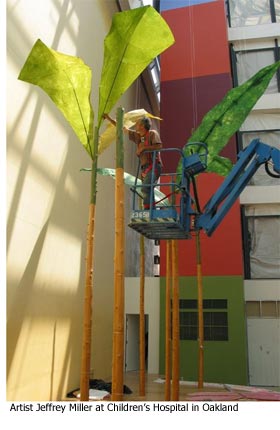
Such nuances are crucial when you’re creating a space for the relatively new concept of mental health urgent care. The facility must serve patients too troubled to wait weeks for a simple counseling session but who may not need full-on psychiatric emergency room treatment. Clients could be people experiencing the onset of schizophrenia, a serious bout of depression, or a traumatic event. Many, if not most, have substance abuse problems as well.
“We can decompress the psychiatric ER [at Olive View-UCLA Medical Center] if we do our job right,” Coomes says.
Even without a permanent home, the county’s mental health urgent care operation in the San Fernando Valley has been seeing a growing caseload: from 832 cases in 2006 to 1,570 cases last year.
One of those clients, William O’Reilly, says the urgent care staff threw him a lifeline when he was in the throes of a profound depression.
“That place saved my life,” says O’Reilly, 47. “There was so much compassion shown…That’s fantastic that there’s going to be a new facility.” When the new urgent care opens, the county aims to treat more than 3,000 clients a year there.
The input from clients—part of a day-long tour for the artists–came from residents at the county’s Hillview intensive residential center, for homeless people who have received mental health treatment.
“This was really quite a wonderful thing for us,” Trachtenberg says. “We got to learn the kinds of things they are drawn to and what repels them.”
The artists—who are a married couple as well as professional partners on this project—say they drew on a wide range of influences, from Ayurvedic medicine to “sacred geometry” and classical allusions, to create the Olive View plan.
“Our goal is to try to create a kind of calming, restorative place,” Trachtenberg says. “We really drew from various cultures…timeless forms, ancient forms, a response to nature and to geometry—an approach both ornamental and restorative that hopefully will lift the spirit.”
“The staff was important, too,” says Miller, who is also a landscape architect. “They were making sure we were aware of certain color relationships.”
While psychiatric urgent care is offered elsewhere in the county, including St. John’s Hospital in Santa Monica and the Augustus F. Hawkins Mental Health Center in South Los Angeles, Olive View will be the first stand-alone facility to be built specifically for that purpose.
 The $10.8 million, 10,800-square-foot project—which aims for LEED silver certification for its environmentally sensitive building practices—is also the first in the county to incorporate the artists’ concepts in the plan from the very beginning of the process.
The $10.8 million, 10,800-square-foot project—which aims for LEED silver certification for its environmentally sensitive building practices—is also the first in the county to incorporate the artists’ concepts in the plan from the very beginning of the process.
“It’s really been great having this team effort—not just coming in after the fact and plunking in some art,” says Carrie Brown, a civic art project manager for the county Arts Commission who has been working on the Olive View project for the past three years.
Integrating art into new projects took off with the enactment of the county’s civic art policy in 2004. Since the 2005-2006 fiscal year, 1% of the design and construction budget for capital projects must be allocated to art in and around the new developments.
When it came to selecting the artists for Olive View, the San Francisco-based Trachtenberg and Miller drew high marks for their experience. They’ve previously worked on projects including an atrium at Children’s Hospital in Oakland and a multi-faceted art installation for the rotunda of the Hillview Library in San Jose. Trachtenberg also served as the sole visual artist on a mayoral advisory panel for the suicide barrier on the Golden Gate Bridge.
But in the end, it was their artistic approach as much as their track record that won over the staff at the department of mental health.
In fact, mental health staffers were amazed when they first saw the interlocking circles motif incorporated into the project’s signature stepping stones.
Had the artists gotten a look at their treatment playbook?
The design looked like a direct homage to the “family systems theory” pattern at the heart of their therapeutic model—in which patients are linked with family and other support sources.
“They were sure that we had studied their diagrams,” Trachtenberg says.
Work on the Olive View art elements—which, in addition to the stepping stones, will include a painted frieze on wood panels, suspended sculpture, and a 49-foot “horizon sliver” composed of polycarbonate panels—is set to begin this summer. Trachtenberg and Miller are planning to install their work right after construction finishes in the summer of 2011.
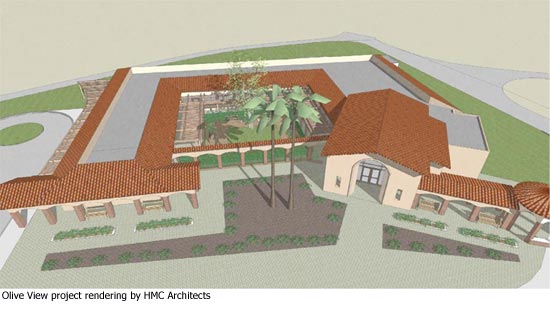
The new facility can’t open soon enough for the staffers who will work there.
It’s been five years now since the phalanx of psychiatrists, social workers and nurses, caseworkers and community workers attached to the urgent care program squeezed into “temporary” borrowed space at the San Fernando Mental Health Center. That has meant five years of working in “submarine-like conditions,” often with little privacy as they seek to diagnose, treat and refer desperately troubled clients.
“This is stolen space. Actually, more begged and borrowed space,” Coomes says on a tour of the facility, introducing a small team of case managers and community workers charged with staying in touch with clients and making sure they are scheduled for follow-up visits.
The group’s supervising psychiatrist, Dr. Jeffrey Marsh, recently gave up his office to a junior colleague who sees more patients than he does. Marsh has a cubicle now. As for ambiance, well, it’s safe to say that a high point may be the Sigmund Freud action figure he’s put up on the wall.
Working conditions aside, what’s most important to Coomes, Marsh and their colleagues is being able to offer clients—and their families—a tranquil and healing environment to come to at a frightening and stressful time.
“To create an atmosphere that’s safe, calm and pleasant is really important for the population,” Marsh says. “There aren’t a lot of places like that.”
Posted 3/10/10
Metro rights historical wrong
March 8, 2010
Nearly five years ago, at the mouth of a new subway tunnel in East L.A., construction workers encountered a stunning find: coffin wood and human bones.
On that day in June, 2005, work on the Metro Gold Line Extension project abruptly stopped.
Archeologists using ground-penetrating radar and metal detectors began an exploration that lasted nearly a year. In the end, 174 burial sites with human remains and such artifacts as coins, coffin hardware, pottery, even opium pipes.
The workers had unearthed not only a long-forgotten public graveyard from the late 1800s but also a shameful chapter in Los Angeles’ history.
The hidden cemetery at First and Lorena streets had been the final resting place for indigents of all races, but mostly for immigrant Chinese laborers who’d been barred from other graveyards because of discrimination in the era of the Chinese Exclusion Act. The land—just outside Evergreen Cemetery, where some of the day’s most prominent civic leaders were buried—had become part of the Los Angeles County Crematorium in the 1920s.
Crews discovered the remains while removing a retaining wall on the crematorium’s south side. When news of the find spread, Chinese-American activists called for a quick investigation and a more respectful reburial.
And so on Monday morning, beneath lowering skies at Evergreen Cemetery in Boyle Heights, approximately 100 community members and a contingent of elected officials and Metro executives solemnly gathered to honor the dead and recognize their contributions by formally dedicating a new memorial wall.
Evoking the adobe walls and Spanish-tile roof typical of 19th century mission architecture, the wall tells the story on a pair of bronze plaques flanking a quartet of paintings illustrating the region’s Mexican, Native American, Chinese and Catholic heritage. Eight niches hold mounted fragments of tombstones and memorial markers, several comprising only Chinese characters. In the center, a large plaque reads simply:
In memory of those before us.
Courageous pioneers laid
the foundation through toil and struggle.
Those who follow honor their
spirit by achieving higher goals.
Supervisors Gloria Molina and Zev Yaroslavsky, Rep. Judy Chu and Los Angeles City Councilmember Jose Huizar were among the speakers recalling the historical sacrifices and warmly recalling their own childhood ties to the area. Irvin R. Lai, representing the Chinese-American community, delivered the “Sojourner’s Poem” composed especially for the occasion. The ceremony concluded with an interfaith benediction by a Catholic priest and Buddhist monk before the ceremonial unveiling.
The human remains and artifacts will be reburied inside Evergreen next to a historic Chinese shrine that was built outside the cemetery in 1888.
“On each grave with a marker,” Lai said, “we have Chinese characters that depict the ideas and the lament of the conditions that they were in,” he explained. “It’s very important that when you look at the grave and you see those four characters, they’re like talking back to you about how they feel at that particular time. The conditions were very bad, and they were treated very wrong.”
The archeological discovery revealed the extent of racism leveled at Chinese laborers in 19th century Los Angeles. In newspaper articles, they were derided as “Celestials” and “heathens.” Their loved ones were forced to pay $10 for burials while other impoverished families were laid to rest for free.
Some of the plots for the Chinese had been marked with headstones or “burial bricks,” painted or incised with information about the deceased, including the home village. One extraordinarily precise brick said a man named Wong, from a village called Wing Shing, died on December 11, 1885, between 4 and 5 in the morning.
The long-obscured graves of Europeans also produced a trove that included metal coffin fittings, buttons, ale bottles and a $10 gold piece. The headstones revealed that there’d been a high number of childhood deaths. Anna Ludemann, for example, died at the age of five months in 1880, her passing marked with a small marble headstone adorned with a cross.
Once archeologists had completed their painstaking excavation by hand of the remains, Metro established a public process involving community members to chart the future course.
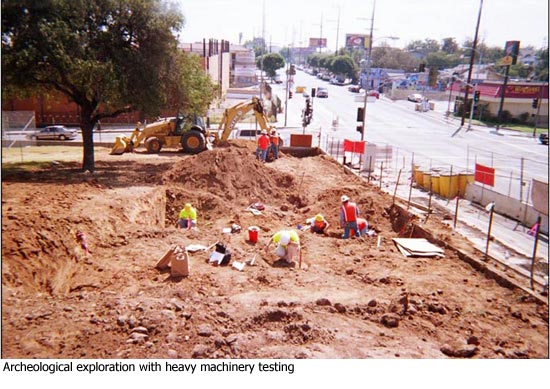
An advisory committee comprising business owners and residents along the six-mile alignment of the Eastside Extension, joined by members of the Chinatown community, met monthly over the course of three years to develop recommendations.
Once the initial decision was made to inter the remains at the neighboring Evergreen Cemetery, Metro engaged a feng shui consultant to determine the most hospitable location—and so the cemetery’s Chinese Shrine became the fitting and final resting place for these early Los Angeles pioneers.
Among those attending Monday’s ceremony was Gaye Buzbee Jacobs and her daughter Susan. They’d come from Colorado to pay final tribute to Gaye’s great-grandfather’s youngest brother, Thomas, a boy of 17 whose 1883 gravestone was among those unearthed in the potter’s field.
For her, the discovery had solved a longstanding family mystery. “He was a rascal,” she conceded with a chuckle, “he ran away from Colorado after he’d gotten in some trouble, and then got in some trouble here.”
Although Metro did exhaustive historical research to try to identify those buried in the forgotten cemetery and to locate relatives, Jacobs found out in a far less predictable way.
“A retired Metro driver who moved to South Dakota, got interested in genealogy, got on the Web, found a distant cousin of mine in Des Moines, Iowa, who then called me and said, ‘I think Thomas is yours, isn’t he?’ And I said, ‘Yeah, I had a Thomas,’ and figured it out from there.”
Clutching a small bouquet of purple tulips, Jacobs said: “I just figured poor Thomas never even had any flowers, so you can at least do that.”
Click here to read a Metro-commissioned study of this historic graveyard.
Posted 3/08/10
Board considers needle-sharing plan
March 4, 2010
 On Tuesday, the Board will take up a proposed pilot $500,000 needle-exchange program, funded by tobacco-settlement monies, aimed at reducing the spread of HIV/AIDS, hepatitis and other blood-borne diseases among injection-drug users in the San Fernando Valley and other portions of the County of Los Angeles.
On Tuesday, the Board will take up a proposed pilot $500,000 needle-exchange program, funded by tobacco-settlement monies, aimed at reducing the spread of HIV/AIDS, hepatitis and other blood-borne diseases among injection-drug users in the San Fernando Valley and other portions of the County of Los Angeles.
The program calls for contracting with private non-profit agencies Asian American Drug Abuse Program, Inc., Bienestar Human Services, Inc., Common Ground The Westside HIV Community Center, Public Health Foundation Enterprises Inc. and Tarzana Treatment Centers for outreach, education and needle-exchange services in specified locations.
County public health officials will assess the program’s effectiveness before considering extending and expanding its operation. Needle-exchange programs are not without controversy, with opponents arguing that they condone and even promote drug use. Health advocates point to extensive data showing that needle exchanges don’t increase existing drug use, but they can substantially reduce collateral infections and disease between needle-sharing injection-drug users and their partners and children.
Posted 3/4/10
Selling the census in Topanga
March 4, 2010
Ranging along a rippling creek and up rugged hillsides, the community of Topanga Canyon stands as a unique rural enclave of 9,000, just miles from the urban edge of Los Angeles.
For decades, artists, musicians and nature lovers have lived together in the woodsy, bohemian community with a quirky independence. Residents treasure the natural beauty, a do-it-ourselves community spirit and a deep sense of privacy.
Maybe just a little too much privacy, as far as the U.S. Census is concerned.
 Topanga has been designated a “hard to count” area—one of 22 unincorporated L.A. County communities being targeted for a special effort to make sure that every man, woman and child is accounted for when the census forms go out this month.
Topanga has been designated a “hard to count” area—one of 22 unincorporated L.A. County communities being targeted for a special effort to make sure that every man, woman and child is accounted for when the census forms go out this month.
Educated and for the most part prosperous, Topanga might seem a surprising choice for the designation. Other areas that made the county’s “hard to count” list are places like Willowbrook and East Los Angeles, where poverty, transience, unemployment, language barriers and low levels of education can present traditional obstacles to accurate census counts.
But those who know the Topanga region well say that just getting the word out in this diffuse, rural community of winding lanes and properties with multiple structures can be difficult, especially among the elderly. And, of course, landlords might not be eager to disclose on a census form the existence of any extra residents on their properties.
Perhaps the biggest challenge is overcoming a hardy strain of homegrown canyon skepticism about handing over personal data to Uncle Sam in the first place. “There are people who are fearful that their information might be used indiscriminately by government offices,” says Marge Santos of the county CEO’s office, who is the “complete count committee” chair for unincorporated areas.
Some are concerned that individual household data might find its way to tax agencies, or be subject to “data mining” in the private sector or even identity theft.
So with privacy concerns on a collision course with the need to get a good count to ensure a host of civic benefits, public officials and local community activists are banding together in a campaign called “Topanga Counts!”
And to do that requires the ability to speak fluent Topangan.
“We’ve got to relate the Census directly to Topangans, to tell people what it’s going to mean in Topanga terms,” says Stacy Sledge, president of the Topanga Town Council, a volunteer group that links the community to the county government and is helping the Topanga Counts! efforts.
That means a publicity and communications campaign that includes not only posters, banners, e-mail blasts and newspaper ads but also stationing a U.S. Census outreach worker in a local building that houses the Historical Society.
And it means that Topanga Elementary Charter School principal Liam Joyce is leading a month-long effort to motivate parents to fill out census forms by hitting the parents’ most influential friends: their kids.
None of this is an idle exercise in trying to drum up civic pride. The 10-year tally of all Americans mandated in the U.S. Constitution becomes the baseline for demographic and political decision-making, from laying district boundaries for Congress and state and local offices to apportioning funding for a host of vital public services.
This year’s questionnaire is a streamlined, 10-question form that will be easier to fill out than ever, as the county’s new census website explains.
To allay community suspicions, census officials point out the data gathered is relatively innocuous – less than the typical online credit card purchase. The listed information doesn’t go much beyond name, gender, ethnicity, age and telephone number and number and relationship of people in the household.
To further help defuse criticism based on fears of questioning, the group is running ads in the local newspaper, the Topanga Messenger.
An ad that will run this week, headlined “Topangans Watch Your Mailbox,” is a blow-up of the one-page form designed to show residents exactly how simple and non-threatening the actual questions are.
A recent ad featured a letter from Supervisor Zev Yaroslavsky linking accurate census data to increased financial benefits such as funding for schools, libraries, transportation and disaster first- responders. The letter stressed that “no personal identification such as DMV records, Social Security or other financial information will be requested. All data is confidential.”
As for landlords with extra units, Marge Santos says she has heard from some who are torn over whether to participate in the census. “They wanted to make sure the person in the back gets counted,” she says, “but they wanted to know whether they were going to be penalized.”
If the rental unit doesn’t have a separate mailing address, the homeowner should list the renters as residents, Santos says. She emphasized that these homeowners should not be fearful because census information on extra tenants is confidential and will not be shared with other agencies.
Overcoming philosophical and political objections may be a tougher sell. Many residents vigorously opposed the federal Patriot Act as too intrusive, Sledge points out, and suspicions linger.
Privacy concerns led Topanga Town Council vice president Rebecca Goldfarb to closely question outreach workers at recent community meetings. Saying that she had qualms about answering some questions, she asked officials about whether partially completed forms can count. “I do understand the value and great importance of the census,” says Goldfarb, a wills and trusts attorney, “but I think many people in Topanga are concerned about the kind of information that is being solicited.”
Posted 3/4/10
From unmarked graves to lasting honor
March 4, 2010
When construction crews building the Metro Gold Line Eastside Extension unearthed human remains in June 2005 while tunneling on a portion under the Los Angeles County Crematorium, work halted immediately. Metro publicly announced the dramatic findings, and what had been a construction site became an archeological excavation as experts were called in to examine the discovery and help lay out plans for respectful re-interment. On Monday, March 8, at 9 a.m., Supervisor Zev Yaroslavsky and other officials will formally dedicate a memorial wall honoring the 19th century Chinese immigrant laborers and others buried with personal artifacts in the unmarked graves of that potter’s field. Their final resting place will be the adjoining Evergreen Cemetery in Boyle Heights, next to the historic Chinese Shrine.
Posted 3/4/10
Butterflies are blue—and free
March 4, 2010
 A batch of tiny blue butterflies will fly out of captivity Saturday morning and into restored habitat at the Deane Dana Friendship Regional Park Community Center in San Pedro. The endangered Palos Verdes blue butterflies, bright blue thumbnail sized insects, will be released into their traditional habitat, coastal sage scrub, restored at the park by the Palos Verdes Peninsula Land Conservancy.
A batch of tiny blue butterflies will fly out of captivity Saturday morning and into restored habitat at the Deane Dana Friendship Regional Park Community Center in San Pedro. The endangered Palos Verdes blue butterflies, bright blue thumbnail sized insects, will be released into their traditional habitat, coastal sage scrub, restored at the park by the Palos Verdes Peninsula Land Conservancy.
The Palos Verdes blue became an endangered species in 1980 after its population crashed due to the loss of habitat as communities on the Palos Verdes peninsula grew. Soon after, biologists believed it had become entirely extinct. But then the butterfly was found again in 1994 – living on land at the military’s Defense Fuel Support Point San Pedro. The butterflies to be released Saturday were captive reared at the support point and at The Urban Wildlands Group and America’s Teaching Zoo at Moorpark College. For more information, click here.
Posted 3/4/10






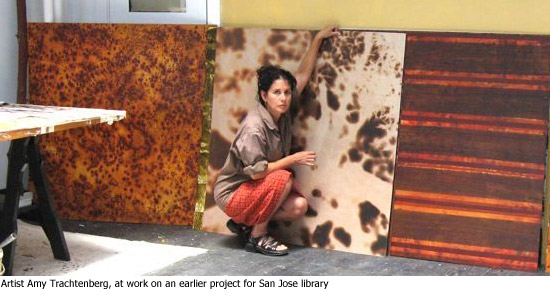

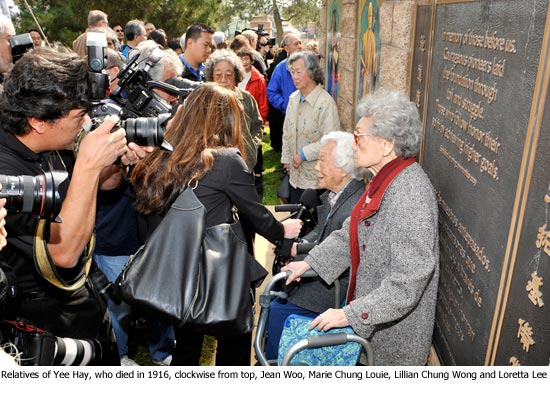











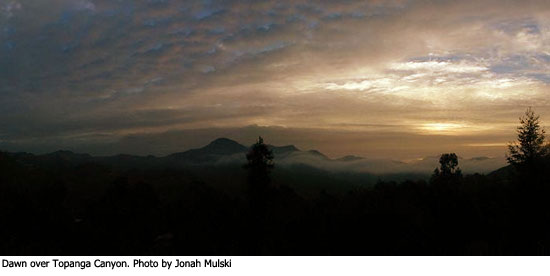





 Check for the latest closure information
Check for the latest closure information








